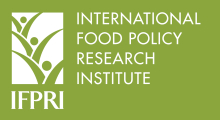Resource information
Nepal is a landlocked country with wide diversity of climatic conditions, ranging from temperate to tropical. Agriculture is the largest economic sector, contributing 35 percent to GDP and employing two thirds of the total population. Rice is the major staple crop, fol-lowed by maize, wheat, and pulses. These crops are spread across three ecological belts: Hills (42 percent of land area), Mountain (33 percent), and Terai (23 percent). Nepal, once self-sufficient in food, has become a net importer in recent years. Farm size has declined from 1.1 hectares in 1995/1996 to 0.7 hectares in 2010/2011, and 53 percent of households have less than 0.5 hectares. Although the agriculture sector is the most important for the sustainable development of Nepal, its growth rate is low, mainly because of low govern-ment investment. Despite the efforts to disseminate improved seeds, national yields of the three main cereal crops remain low: (rice 3.3 t/ha, wheat 2.4 t/ha, and maize 2.5 t/ha).


